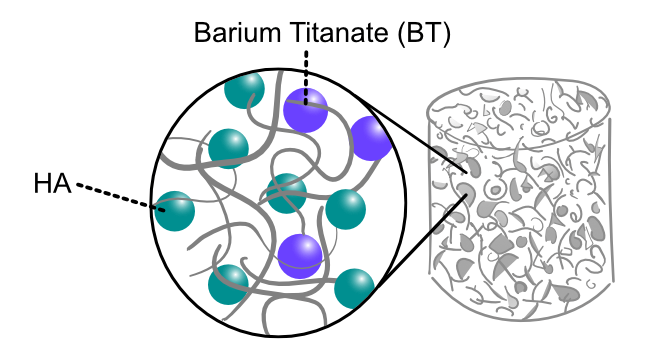Engineered Bioactive Bone Scaffolds
Large bone defects remain a substantial challenge to reconstructive surgery. Typically these defects are treated by autologous bone grafts. However, the limited availability of these bone grafts, along with donor site morbidity after harvesting, continue to drive research on engineered bone scaffolds. Current strategies pursue bone scaffolds made of polymer-ceramic composites that have similar mechanical and structural properties as well as mineral composition to bone but are not osteoinductive. However, bone is also piezoelectric, thus, under mechanical load it produces electrical charges that play an instructive role in tissue regeneration.
In this project, we follow a holistic bottom-up approach to produce electroactive scaffolds. Piezoelectric nanoparticles are used as fillers for polymer scaffolds to mimic bone tissue beyond mechanical properties and mineral composition. The bone scaffolds are produced by an improved solvent casting particle leaching method. Their efficacy towards bone growth is tested by time-lapsed microcomputed tomography (micro-CT) in static and dynamic bioreactor cultures using human bone marrow stem cells. This approach allows us to test different scaffold compositions, enabling us to develop bioactive scaffold materials with osteoinductive properties.
Collaborators:
Prof. Sotiris Pratsinis, Department of Mechanical and Process Engineering, Particle Technology Laboratory, ETH Zürich, Switzerland.

